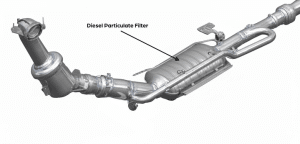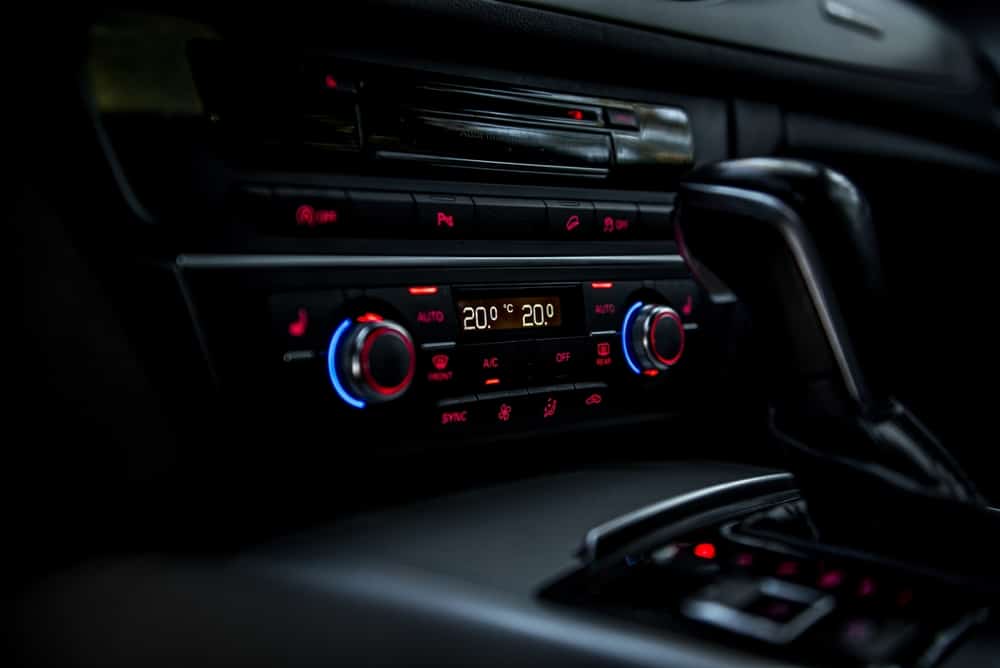DPF Faults P2463 & P246B
Mr B’s Land Rover Discovery Sport had been driving as expected when, without warning, it went into limp mode. Power was heavily reduced, the car struggled on the A27 near Eastbourne, and the dashboard lit up with both the DPF and Engine Management lights.
For Mr B, this was more than a minor issue. His Land Rover was the car he depended on every day, and suddenly it felt weak and unreliable. On top of that came the worry of a costly repair and the risk of lasting engine damage.
When he brought his Discovery Sport to South Coast Garage in Eastbourne, trusted by drivers across Brighton, Lewes, and East Sussex, he wanted certainty. No guesswork. No unnecessary parts. Just an accurate diagnosis and the right repair, first time.
Before we explain how our team restored his Land Rover, it’s worth looking at the Diesel Particulate Filter, why it’s so important, and how it can lead to the kind of limp mode fault Mr B faced.
Land Rover DPF – An Overview
All modern Land Rover diesel vehicles are fitted with a Diesel Particulate Filter (DPF). Its purpose is to capture the fine soot created during fuel combustion and stop it from being released into the atmosphere. Once held in the filter, this soot is burned away when the exhaust reaches high enough temperatures in a process called regeneration.

The system is effective, but it relies on the right driving conditions. If the Land Rover is mostly used for short trips or around-town driving, the exhaust often doesn’t get hot enough to complete regeneration. This leads to soot building up inside the filter.
As the restriction increases, the DPF can no longer work as designed. Warning lights appear on the dashboard — and if the fault is left unresolved, the vehicle will eventually enter limp mode to protect the engine.
That’s why DPF issues should never be overlooked. A slight blockage can quickly worsen, leaving engine performance reduced and repairs more expensive.
Early Fault Detection – P2463 & P246B
When Mr B brought his Land Rover Discovery Sport to us, the dashboard was already lit with two warning lights: the DPF light and the Engine Management Light. The vehicle had gone into limp mode, leaving its’ speed restricted and difficult to handle.
The first step was to connect the Land Rover to our dealer-level diagnostic equipment. The scan highlighted two stored codes:
- P2463-00 – Diesel Particulate Filter restriction, soot accumulation. This showed that the DPF was badly restricted, with soot levels far above the safe operating limit.
- P246B-00 – Vehicle conditions incorrect for DPF regeneration. This confirmed the filter hadn’t been able to regenerate, often caused by short or low-speed journeys where the exhaust never gets hot enough.
For our technicians, these codes provided an essential lead, but they didn’t explain everything. At South Coast Garage in Eastbourne, we use codes as the first clue in diagnosis, not the full story. A fault code highlights the symptom, not the underlying cause.
To ensure the correct repair, the next stage was to run a structured investigation — carefully checking each area that could have contributed to the fault before moving forward.
Tracing the Problem Through Careful Evaluation
With the scan results in hand, the next stage was to trace the underlying cause of the Land Rover’s performance troubles. At South Coast Garage, we rely on a careful, step-by-step evaluation to ensure we identify the real cause rather than jumping to conclusions.
Here’s how our technicians handled the case:
- Engine oil check – Failed regenerations can allow fuel to contaminate the engine oil. In this Discovery Sport, the oil showed signs of dilution, confirming an oil and filter service would be necessary later in the repair to protect the engine.
- Air filter inspection – A blocked or damaged air filter can restrict airflow, causing the engine to run rich and generate more soot. The filter in this Land Rover was clean and in good condition, so it was ruled out as a cause.
- DPF pressure readings – Using dealer-level equipment, we measured the differential pressure across the filter. The readings confirmed heavy soot build-up was creating a serious restriction, consistent with limp mode.
- Internal DPF check – We examined the filter for damage such as cracks or melting. None were found, which meant the filter itself did not need replacing.
- Intake and boost system inspection – Finally, we checked for leaks or weaknesses in the intake and turbo system. No faults were detected.
By completing this evaluation step by step, we were able to rule out other potential causes and confirm the issue was a soot overload. With the fault identified, the next stage was to carry out the repair.
If your Land Rover has dropped into limp mode or is showing a DPF warning, call our team on 01323 734473 to book an expert diagnosis.
The DPF Repair – How We Restored the Land Rover
With our checks confirming a soot overload and diluted oil, the next step was to restore Mr B’s Discovery Sport to full health. At this stage, the repair had to be carried out carefully and systematically to ensure the issue was resolved fully and wouldn’t return.
Here’s how our team completed the work:
- Oil and filter service – Because the oil was contaminated with fuel, we replaced both the oil and filter. This meant the engine was once again protected with clean, effective lubrication.
- DPF clean and regeneration – We performed a controlled regeneration to burn away the soot build-up and remove the restriction from the filter.
- Adaptations reset – Once soot levels had dropped to within manufacturer limits, we reset the system’s adaptations. This allowed the ECU to recognise the filter was clean and ready for future regenerations.
- Fault memory clear and validation checks – Finally, we cleared all fault codes and ran validation checks. With the dashboard free of warnings and the filter restored, the Land Rover was back to performing as it should.
Before handing the car back, we also explained to Mr B how his driving patterns could affect the DPF system. By understanding which journeys help regeneration complete, he could reduce the risk of similar problems in the future.
End Result – A Land Rover Back to its Best

With the repair complete, Mr B’s Discovery Sport was fully restored. The dashboard warnings were gone, the DPF issue resolved, and the vehicle once again delivered the performance he expected.
For Mr B, the transformation was immediate. Instead of a weakened, frustrating drive, he left our workshop in a Land Rover that felt responsive, dependable, and back to its best.
That’s the benefit of professional care — identifying the root cause, applying the right fix, and returning the vehicle in a condition the driver can rely on.
Keep Your Land Rover Performing at Its Best – Book Today
If your Land Rover’s DPF light has come on, don’t delay. These systems are intricate and require professional expertise to fix correctly. At South Coast Garage in Eastbourne, our technicians use dealer-level equipment and specialist knowledge to diagnose the issue and repair it properly, first time.
We provide main dealer standards of accuracy with the value and service of a trusted independent garage.
Why drivers choose South Coast Garage:
- Dealer-level diagnostics and repair procedures
- Experienced technicians who tackle the cause, not just the symptom
- 12-month parts and labour guarantee on all repairs
- Courtesy cars available to keep you moving
- Clear, itemised quotes with no hidden costs
We’re proud to hold a {{average-rating}}-star Google rating from {{review-count}} satisfied customers who trust us for expert service and reliable care.
Whether your Land Rover is in limp mode, showing a DPF warning, or struggling with performance, call our team on 01323 734473 to book your appointment.



